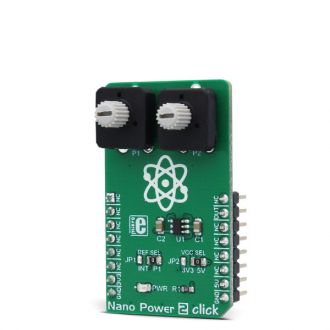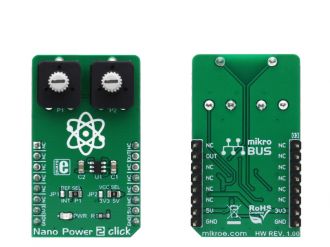
We strongly encourage users to use Package manager for sharing their code on Libstock website, because it boosts your efficiency and leaves the end user with no room for error. [more info]

Rating:
Author: MIKROE
Last Updated: 2018-06-04
Package Version: 1.0.0.0
mikroSDK Library: 1.0.0.0
Category: Linear
Downloaded: 5599 times
Not followed.
License: MIT license
Nano Power 2 click is a very low power voltage comparator, aimed at portable and battery-powered applications. It allows detecting a difference of two voltage potentials, applied on two input pins.
Do you want to subscribe in order to receive notifications regarding "Nano Power 2 click" changes.
Do you want to unsubscribe in order to stop receiving notifications regarding "Nano Power 2 click" changes.
Do you want to report abuse regarding "Nano Power 2 click".


Library Description
Library initializes and defines GPIO driver and performs control of device voltage.
For more details check the documentation.
Key functions:
Example description
The application is composed of three sections:
void applicationTask()
{
outCheck = nanopw2_checkOutput();
if (outCheck != outCheckPrev)
{
WordToStr( outCheck, text );
mikrobus_logWrite( "OUT is: ", _LOG_TEXT );
mikrobus_logWrite( text, _LOG_LINE );
outCheckPrev = outCheck;
}
}
Additional notes and information
Depending on the development board you are using, you may need USB UART click, USB UART 2 click or RS232 click to connect to your PC, for development systems with no UART to USB interface available on the board. The terminal available in all MikroElektronika compilers, or any other terminal application of your choice, can be used to read the message.